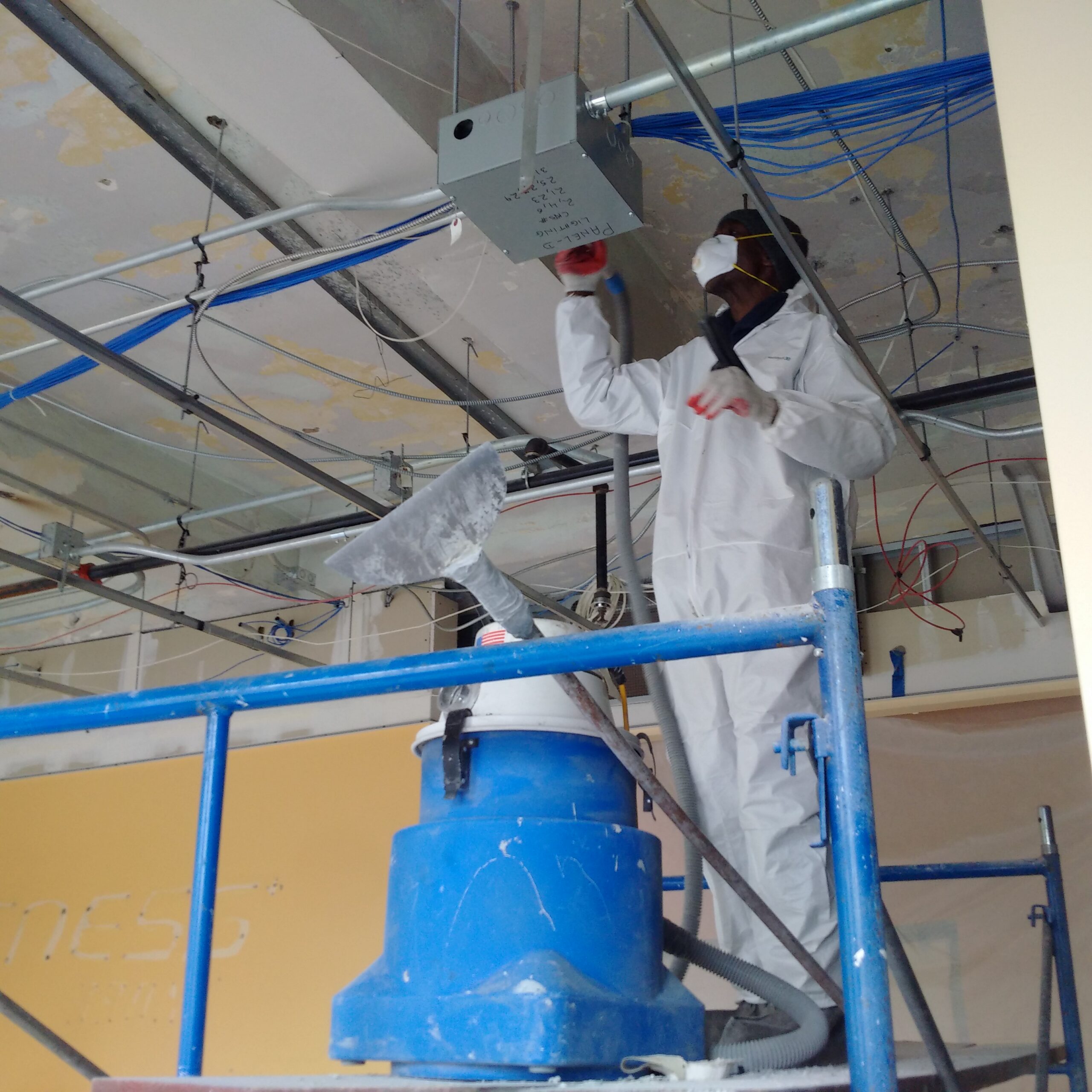Trusted Lead Paint Removal Company-- NYC's Premier Lead Reduction Service
Trusted Lead Paint Removal Company-- NYC's Premier Lead Reduction Service
Blog Article
Ideal Practices for Guaranteeing Safe and Detailed Lead Violation Reduction
Addressing lead offense reduction calls for a multi-faceted method to make sure both security and compliance. It's the final clearance procedure, entailing detailed examinations and lab testing, that really confirms a lead-free setting, making certain long-lasting safety. How do these techniques adjoin to assure detailed lead reduction?

Initial Evaluation
Conducting an initial evaluation is an essential first action in lead offense abatement. This phase encompasses a comprehensive evaluation of the residential or commercial property to identify the visibility, degree, and specific places of lead-based hazards. Certified professionals, such as qualified lead examiners or take the chance of assessors, must perform a detailed site assessment, utilizing devices like X-ray fluorescence (XRF) analyzers to accurately find and measure lead focus in paint, dirt, soil, and water.
The analysis must likewise consist of an evaluation of the structure's background, previous reports, and any kind of complaints or health and wellness concerns reported by residents - Lead Removal Contractors. Recording the findings carefully is crucial, as these records develop the basis for creating an effective abatement method. An extensive analysis also involves sampling and research laboratory evaluation, which are crucial to verify the visibility of lead and overview subsequent actions
Additionally, it is essential to interact the results transparently to all stakeholders, consisting of property owners, renters, and regulative authorities. By making sure that the first analysis is conducted with precision and rigor, professionals can lay a solid foundation for a targeted and efficient lead abatement process, ultimately protecting public health and wellness and making sure conformity with regulative requirements.
Appropriate Containment
Correct control is vital to prevent the spread of lead impurities throughout abatement tasks. Successfully managing control lessens the risk of lead dirt and debris moving to non-work locations, thereby guarding both the atmosphere and individuals outside the instant work area.

Routine evaluations of the containment location are required to look for violations or weaknesses in the obstacle. Any recognized problems should be immediately addressed to preserve the integrity of the control. By sticking to these methods, reduction projects can properly control lead contamination and minimize involved wellness risks.
Worker Defense
Guaranteeing employee protection is vital throughout lead abatement jobs to protect against work direct exposure to hazardous lead bits. Crucial steps consist of making use of personal protective devices (PPE) such as respirators, handwear covers, and full-body matches specifically created to obstruct lead dirt and fumes. Workers ought to go through thorough training on the correct usage and maintenance of PPE, consisting of healthy screening for respirators to ensure maximum effectiveness.
Design controls, such as neighborhood exhaust air flow systems, explanation are crucial in reducing airborne lead concentrations in the workplace. Management controls need to also be implemented, including limiting the duration of direct exposure and turning employees to minimize specific direct exposure times. Normal clinical security and organic surveillance are crucial for very early discovery of lead absorption, making it possible for prompt treatment and therapy.
Moreover, developing a purification procedure is crucial. Workers should comply with strict decontamination procedures prior to breaks and at the end of their change to stop lead dirt from being brought outside the workspace. This includes thorough hand and face cleaning with lead-specific cleansing agents and altering out of contaminated clothes.
Careful Clean-up
Preserving a safe workplace prolongs beyond employee security and includes meticulous cleaning to make certain lead bits Source are thoroughly gotten rid of from the website. The process of meticulous cleaning is vital in avoiding the recontamination of the abated location and protecting both existing and future owners.
To accomplish an extensive cleaning, all work locations need to be systematically sanitized. This involves using specialized HEPA (High-Efficiency Particulate Air) vacuum cleansers and wet-wiping techniques to record and eliminate great lead dust that might have picked surface areas. It is vital to clean all straight surface areas, including floors, window sills, and counter tops, as well as vertical surface areas that may have caught lead particles.
Workers have to use appropriate explanation personal safety equipment (PPE) during cleaning to avoid direct exposure to recurring lead dust. Utilized cleansing products such as wipes, sponges, and mop heads must be disposed of in conformity with unsafe waste disposal policies.

Last Clearance
Last clearance is the important ending phase of lead abatement that figures out whether the website is safe for reoccupation. This important action involves extensive assessment and screening to verify that all lead risks have actually been properly eliminated. The process begins with a visual assessment by a qualified lead-based paint inspector or risk assessor to guarantee no visible dirt or particles continues to be. This is adhered to by collecting dust wipe samples from various surfaces, including floors, windowsills, and other horizontal surfaces. Lead Removal Contractors.

Last clearance screening not only protects future owners yet likewise guarantees conformity with neighborhood, state, and federal regulations. It offers as a recorded validation of the reduction professional's adherence to industry finest practices. Making certain a complete and successful last clearance is vital in safeguarding public wellness and promoting trust in the reduction procedure.
Final Thought
Ensuring risk-free and comprehensive lead offense abatement demands a complex method incorporating initial evaluations with advanced discovery approaches, effective control strategies, rigid employee defense protocols, and thorough cleanup procedures. The last clearance phase, featuring in-depth inspections and lab screening, is critical to confirm conformity with EPA criteria. Adherence to these best methods ensures a secure environment for passengers, minimizes health dangers, and maintains governing requirements, thus promoting public health and wellness and safety and security in lead-affected areas.
Report this page